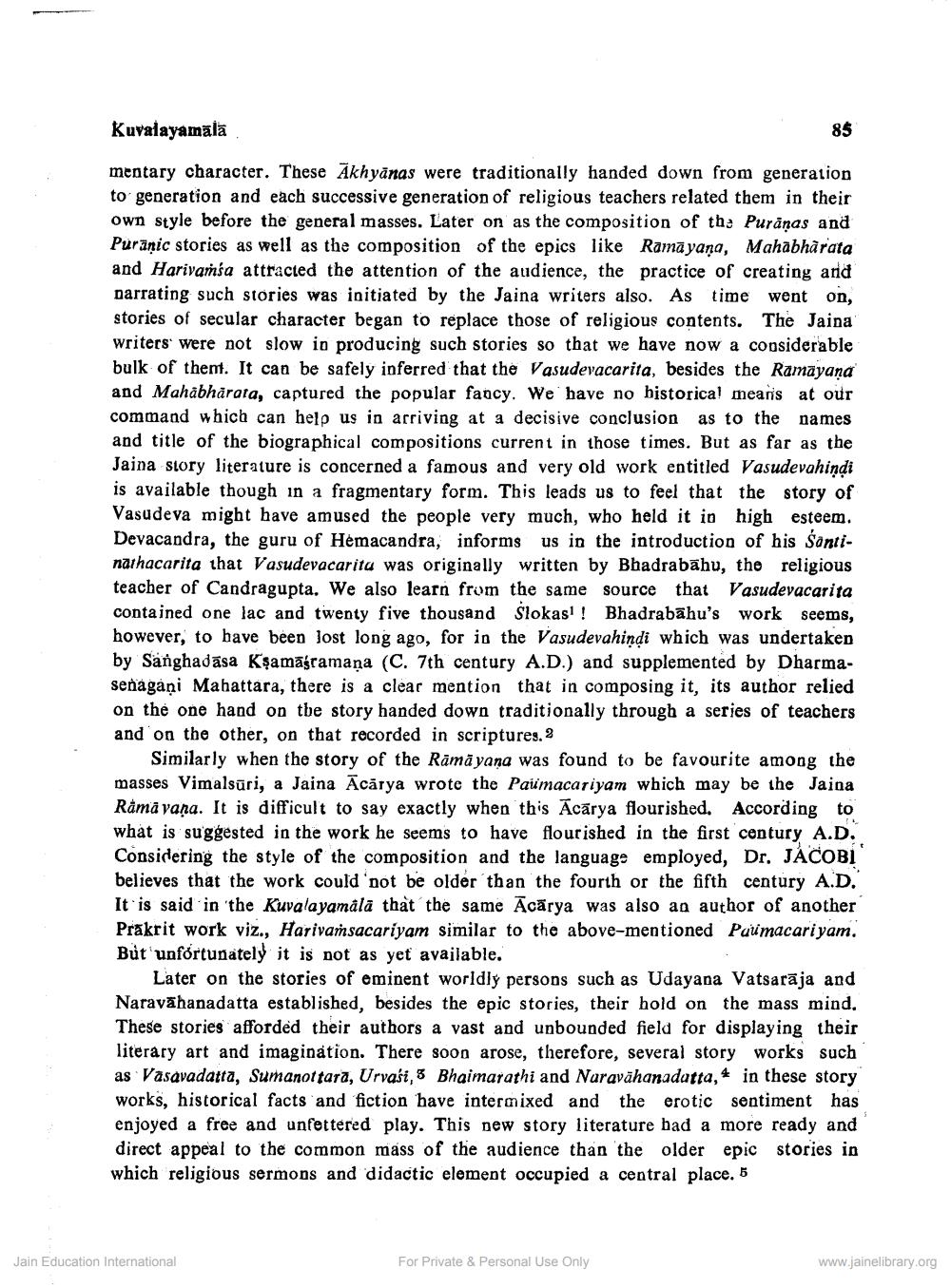________________
Kuvalayamālā
85
mentary character. These Akhyānas were traditionally handed down from generation to generation and each successive generation of religious teachers related them in their own style before the general masses. Later on as the composition of th: Puranas and Puranic stories as well as the composition of the epics like Ramayana, Mahabharata and Harivansa attracted the attention of the audience, the practice of creating and narrating such stories was initiated by the Jaina writers also. As time went on, stories of secular character began to replace those of religious contents. The Jaina writers were not slow in producing such stories so that we have now a considerable bulk of thent. It can be safely inferred that the Vasudevacarita, besides the Ramayana and Mahabharata, captured the popular fancy. We have no historical means at our command which can help us in arriving at a decisive conclusion as to the names and title of the biographical compositions current in those times. But as far as the Jaina story literature is concerned a famous and very old work entitled Vasudevahindi is available though in a fragmentary form. This leads us to feel that the story of Vasudeva might have amused the people very much, who held it in high esteem. Devacandra, the guru of Hemacandra, informs us in the introduction of his Šantinathacarita that Vasudevacarita was originally written by Bhadrabāhu, the religious teacher of Candragupta. We also learn from the same source that Vasudevacarita contained one lac and twenty five thousand Slokas!! Bhadrabahu's work seems, however, to bave been lost long ago, for in the Vasudevahindi which was undertaken by Sanghadāsa Kşamājramaņa (C. 7th century A.D.) and supplemented by Dharmasenagani Mahattara, there is a clear mention that in composing it, its author relied on the one hand on the story handed down traditionally through a series of teachers and on the other, on that recorded in scriptures. 3
Similarly when the story of the Rāmāyana was found to be favourite among the masses Vimalsūri, a Jaina Ācārya wrote the Paumacariyam which may be the Jaina Rama vana. It is difficult to say exactly when this Ācārya flourished. According to what is suggested in the work he seems to have flourished in the first century A.D. Considering the style of the composition and the language employed, Dr. JACOBI believes that the work could not be older than the fourth or the fifth century A.D. It is said in the Kuvalayamåla that the same Ācārya was also an author of another Prakrit work viz., Harivamsacariyam similar to the above-mentioned Paumacariyam. But unfortunately it is not as yet available.
Later on the stories of eminent worldly persons such as Udayana Vatsarāja and Naravāhanadatta established, besides the epic stories, their hold on the mass mind. These stories afforded their authors a vast and unbounded field for displaying their literary art and imagination. There soon arose, therefore, several story works such as Vasavadatta, Sumanottara, Urvasi, 3 Bhaimarathi and Naravāhanadutta, 4 in these story works, historical facts and fiction have intermixed and the erotic sentiment has enjoyed a free and unfettered play. This new story literature bad a more ready and direct appeal to the common mass of the audience than the older epic stories in which religious sermons and didactic element occupied a central place. 5
Jain Education International
For Private & Personal Use Only
www.jainelibrary.org




